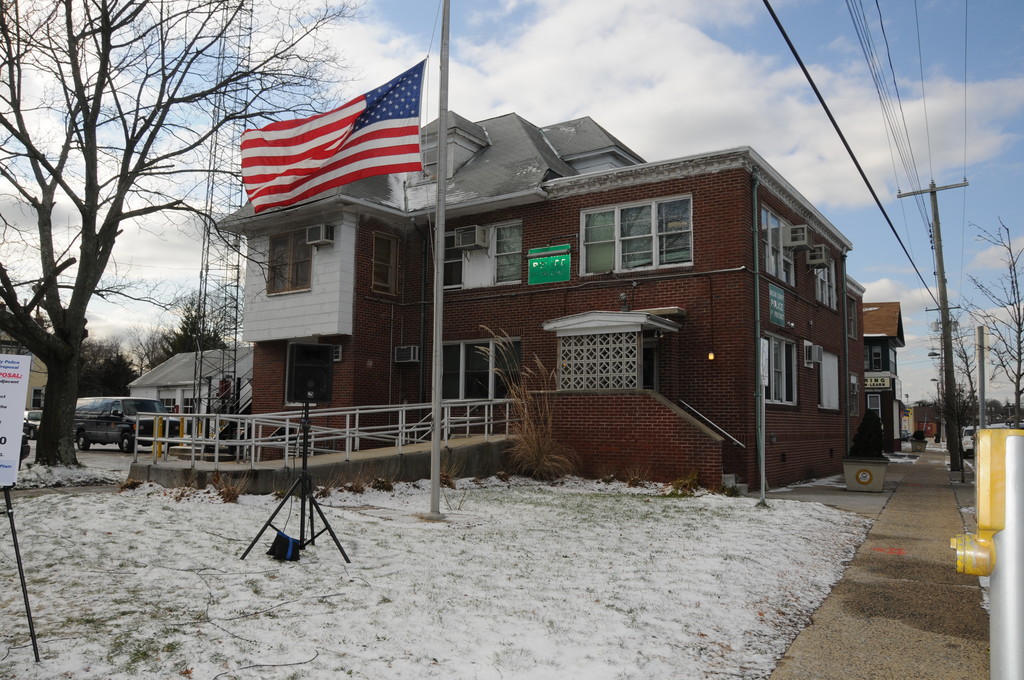Cop-out? Cash-strapped county considers precinct closures
“The precinct is just a building,” according to Katie Grilli-Robles, spokeswoman for Nassau County Executive Ed Mangano. Closing two of the county’s eight police precincts, Grilli-Robles says, will have little effect on policing in the county — especially now that the Police Department and its vehicles are equipped with modern technology, and officers and residents are using station houses less — but it will save about $15 million.
In a presentation to the Legislature at a hearing on Oct. 12, Acting Police Commissioner Thomas Krumpter said that the county’s plan to realign the current precinct boundaries — expected to help close a projected $310 million deficit for 2012 — would result in improved efficiency. Closing two station houses, Krumpter said, would not reduce patrol posts.
“In other words, there will be 178 patrol posts in the county today and there will be 178 patrol posts if the precincts are realigned,” he told legislators, adding that the realignment would also have no effect on response times or the number of officers on patrol.
Despite Krumpter’s reassurances and those of Mangano himself, some residents and members of the Police Benevolent Association, including President James Carver, say they are concerned about the realignment’s potential impact, calling it an unsafe idea. At a rally outside police headquarters on Oct. 11, Carver said that eliminating a precinct, which he described as being “special” to any given community, gives residents of that community the “impression that you’ve given up on [them].”
Rosalie Norton, president of the West Hempstead Community Support Association, said she has developed close relationships with members of the 5th Precinct, and particularly the Problem Oriented Policing unit that serves her neighborhood. While the possibility of losing the precinct worries her, she said she understands the county’s proposal.
“If they’re thinking in terms of consolidating [to] eliminate the insurance on the building, the maintenance on the building, all of the heating, electricity, utilities, there’s a cost-savings in closing a precinct, the physical building,” Norton said. “It may not be the worst thing. There are some very difficult decisions to be made. As long as you’re not diminishing what you’re providing in the way of services within the different precincts, does it make a difference?”
It does for Carver, who said it was unfair of the county to withhold its decision about which two precincts would be slated for closure. At the legislative hearing, Krumpter said the Police Department is now conducting a “detailed analysis” in order to determine which two station houses will close and how the boundaries of the remaining six will be realigned.
The 1st and 3rd precincts will not be considered for closure, Krumpter said, noting that a construction bid for the 1st Precinct, in Baldwin, is expected to be released soon and that the 3rd Precinct, in Williston Park, is the largest and newest. Those two divisions, as well as the 5th Precinct in Elmont, are far busier than the other five, and the current distribution of services is inefficient, according to Krumpter, who said that the existing precinct map was created in 1972.
Under new boundaries, each of the six precincts would manage around 70,000 calls annually and handle some 3,000 arrests. Some of the remaining station houses — like the 2nd in Woodbury and the 4th in Hewlett, which have the fewest arrests — would have to expand their processing and detention areas to accommodate the added volume.
“The realignment will balance the administrative work load, [and] none of [the realigned precincts] will have a greater workload than the busiest precinct today,” Krumpter told the legislators. But before taking any action, the NCPD must address a significant number of logistical issues, the commissioner said, including reprogramming department communication and computer systems. If the realignment is approved by the Legislature, Krumpter said, he expects it to be completed by the second quarter of 2012.
In addition to the territorial changes, there would be some changes in department personnel: It would lose 81 officers and employees who now perform administrative duties. Krumpter emphasized that he would not lay off any patrol officers. Instead, cuts would come through attrition, primarily retirements and voluntary resignations, and the department has already identified 27 positions that would not be filled. Laid-off employees would have the option of accepting demotions to lower-paid positions.
“No one wants to see a precinct close, certainly [not] the businesses around it,” Norton said. “I believe that we’re at a point in time where doing the same thing over and over again will not necessarily produce the best results, and you really have to start examining how can you get the best results without adversely impacting the people that you serve.”
The Legislature is expected to vote on the county budget, which includes the realignment proposal, by the end of the month.

 54.0°,
Mostly Cloudy
54.0°,
Mostly Cloudy 




